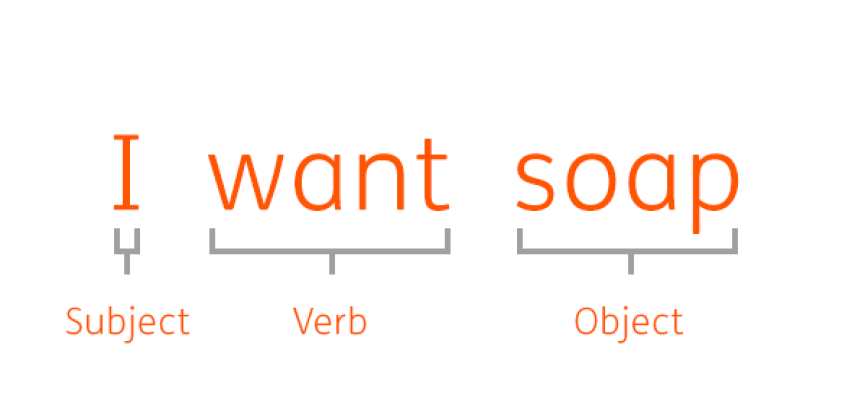| “go store” | “I want to go to the store” |
| “yesterday go store” | “yesterday I went to the store” |
| “he like dog” | “he likes the dog” |
| “I run” | “I’m running” |
What’s the difference between these sentences? The ones on the left sound like they are from a young child who hasn’t learned the rules of grammar yet. The ones on the right sound mature, correct – and, well, smarter.
We often hear from parents and teachers who want their child or student to sound like the sentences on the right. They feel people will think their child or student only understands at the level of a very young child if the child or student speaks with immature grammar. And they want the AAC system to make it much easier, even automatic, to create grammatically correct sentences.
It’s very natural to want an AAC user to sound as smart as they really are. But sometimes this natural wish for good grammar “out of the box” gets in the way of important language learning experiences.
Let me watch you fish: Hearing good grammar
To learn grammar, you’ve got to hear grammar. You need people around you speaking with the grammar of your language. Without this kind of grammatical input, you can’t understand or learn to use the grammar of a language.
Most people who use AAC and have good hearing and auditory processing skills hear enough grammar. Their family, friends, teachers, and therapist all talk to them and around them.
But just hearing grammar isn’t enough to learn to use grammar. You also need to try and create grammatical sentences - and have people give you feedback about whether you got it right.
Speaking children learn grammar by making mistakes, and having them corrected by the people they’re having conversations with. AAC users aren’t going to use speech to make grammatical sentences - if they were, they wouldn’t need AAC! They are going to use their AAC system to make their sentences.






